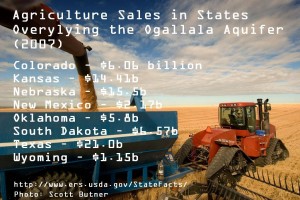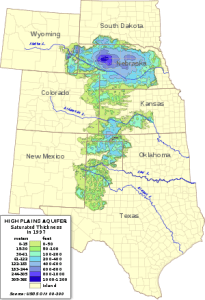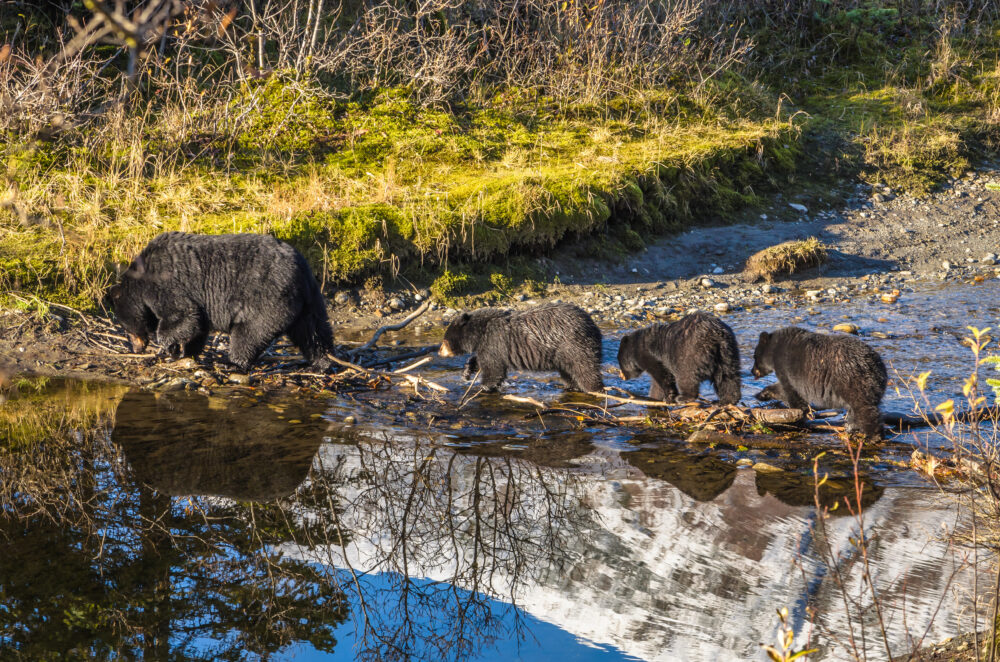We have much more to do and your continued support is needed now more than ever.
Tar Sands or Farm Lands? Keystone XL’s Threat To America’s Breadbasket

In its original application for a Presidential permit, TransCanada Corp. (the company behind the Keystone XL pipeline) planned a route that would have cut through the sensitive Sandhills region of Nebraska.
Fierce opposition from farmers, ranchers, and citizens of every political stripe forced the company to scrap that idea.
Now TransCanada is trying to identify a new route.
Any Pipeline Through Nebraska Puts the Ogallala Aquifer at Risk
Even though the oil industry was forced to make this concession to public health, a much vaster resource is still threatened: the Ogallala aquifer, which provides 30% of the groundwater used for irrigation in the United States, and drinking water for 2 million people.
Almost any feasible pipeline route through Nebraska will still run over the Ogallala aquifer.
It would be hard to overemphasize how vital the Ogallala is to our national economy. As Nebraska’s Republican Governor Dave Heineman stressed in a letter to the White House, “This resource is the lifeblood of Nebraska’s agriculture industry.”
The aquifer’s enormous stores of fresh water are the only reason the “Breadbasket of America” can exist–it irrigates farms that harvest nearly 20 percent of our wheat and cotton, and 15 percent of the U.S. corn–and makes possible a booming cattle industry across the Plains states.

Tar Sands Pipelines: A Disaster in Waiting
Oil spills happen all the time–a dirty secret that’s not so secret anymore, thanks to the scrutiny faced by the industry the last few years. And tar sands pipelines in particular have been in the news for all the wrong reasons:
- a 1.1 million gallon spill in Michigan’s Kalamazoo River;
- a 42,000 gallon spill in the pristine Yellowstone River in Montana; and
- a 21,000 gallon eruption in North Dakota on TransCanada’s first Keystone 1 pipeline – which has been plagued by at least twelve spills since it was completed in 2010.
TransCanada is doing their best to hide these risks, even going so far as to manipulate data submitted to the U.S. State Department.
An independent analysis by the University of Nebraska found that the worst-case spill scenarios were much higher than TransCanada’s estimates, with up to “91 major spills over a 50 year design life of the pipeline” and even the potential for benzene contamination of drinking water for hundreds of thousands of people. A study after the Kalamazoo spill found that nearly 60% of area residents experienced gastrointestinal, respiratory or neurological symptoms from exposure.
An Easy Choice
It’s obvious that tar sands pose an enormous risk to the Ogallala aquifer and the crops that feed Americans from coast to coast. Public polling on the issue reflects this concern: According to a Feb. 3 poll conducted by Hart Research Associates, 64% of voters think that the risk of a toxic oil spill in the Ogallala aquifer was a “very convincing” or “somewhat convincing” reason to block construction of Keystone XL. And after hearing pro and con arguments, a wide plurality of voters supported the White House’s decision to deny the permit (47% support, 36% oppose, and 17% undecided or no opinion).
Randy Thompson, a rancher whose land Keystone XL would cut through, put it in plain terms:
Perhaps it’s just my Nebraska logic, but from my perspective it appears that the United States is getting the short end of the stick on this deal. Canada and the big oil companies are reaping the rewards while Americans are being left to fix the fence.
When you hear it like that, you realize that this debate boils down to a pretty simple question: Do we decide to protect Americans’ food supply and drinking water, or pad the profits of foreign oil companies that want to cut through our farmland on the way to overseas markets? It should be an easy choice.
![]() Urge President Obama to stand strong to protect wildlife against Big Oil.
Urge President Obama to stand strong to protect wildlife against Big Oil.
For more on tar sands and the Keystone XL pipeline visit nwf.org/tarsands




















